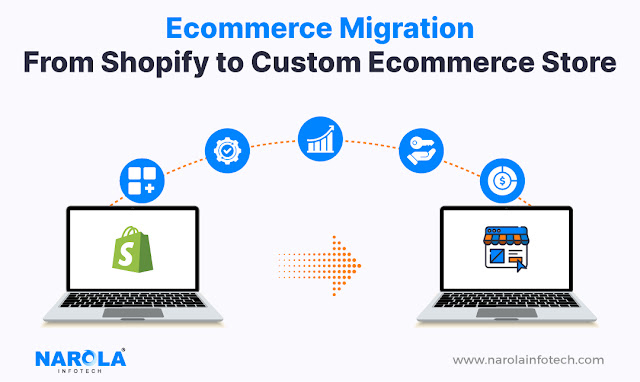One such decision that can significantly impact your online store's performance is replatforming. If you're currently using Shopify and contemplating a shift to a custom ecommerce platform, you're on the right track towards unlocking new opportunities for growth and success.
Understanding Ecommerce Replatforming
Ecommerce
replatforming refers to the process of migrating your
online store from one platform to another. In this case, it involves
transitioning from Shopify, a popular hosted ecommerce solution, to a
custom-built ecommerce platform tailored specifically to your business needs.
Why Consider Replatforming?
1. Customization Freedom
While Shopify offers a range of templates and customization
options, a custom ecommerce platform provides unparalleled flexibility. You can
design every aspect of your store, from the user interface to the checkout
process, ensuring a unique and seamless shopping experience for your customers.
2. Scalability and Performance
As your business grows, so do your requirements. Custom
platforms are built to scale effortlessly, handling increased traffic,
transactions, and data without compromising performance. This scalability
ensures that your store can adapt to changing demands and deliver a
consistently high-quality experience.
3. Enhanced Brand Identity
Stand out in a crowded market by showcasing your brand
identity through custom design elements, functionalities, and features. A
custom platform allows you to express your brand's personality and values,
fostering stronger connections with your audience and driving brand loyalty.
4. Ownership and Control
With a custom ecommerce platform, you have full ownership
and control over your store's infrastructure, data, and future developments.
This level of control empowers you to make strategic decisions, implement
advanced marketing strategies, and optimize performance without limitations.
Making the Transition Smooth
Replatforming can seem daunting, but with proper planning
and expert guidance, it can be a seamless process. Here are key steps to ensure
a smooth transition:
- Evaluate
Your Needs: Identify your current pain points, growth objectives, and
must-have features for the new platform.
- Choose
the Right Partner: Select a reputable ecommerce
development company with experience in custom solutions and migration
services.
- Plan
and Test: Develop a comprehensive migration plan, test extensively,
and ensure data integrity throughout the process.
- Optimize
and Iterate: Continuously monitor and optimize your new platform based
on analytics and user feedback to drive ongoing improvements.
Conclusion
Replatforming
from Shopify to a custom ecommerce platform is a strategic move that can
elevate your online business to new heights. By leveraging customization,
scalability, brand identity, and control, you can create a differentiated
shopping experience that resonates with your customers and drives sustainable
growth.

Comments
Post a Comment